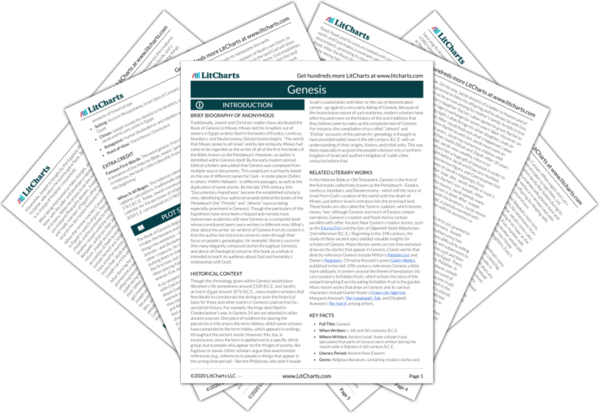Next
Summary
Genesis Study Guide |
Next
Summary
|
Welcome to the LitCharts study guide on Anonymous's Genesis. Created by the original team behind SparkNotes, LitCharts are the world's best literature guides.

Famous First Words. The word genesis, from the Greek translation of the Hebrew Bible, means “generation” or “origin.” In Hebrew, the book’s title is Bereshit, from the first words, “In the beginning.”
When It All Began. The Hebrew calendar, based on medieval rabbinic calculations, traditionally dates Creation to the year 3761 B.C.E. Today, Jewish communities continue to use this calendar for the purposes of religious observance. The year 2020 C.E. corresponds to 5780/5781 on the Hebrew calendar.